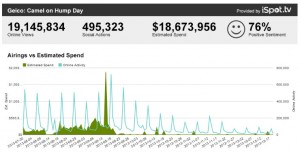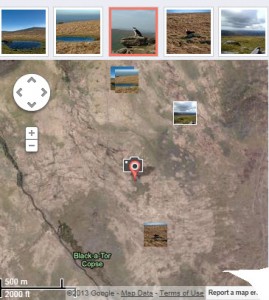Twitchable Moments.
I wrote earlier in the week about ad tracking application iSpot and how it will help marketers with Twitch Point Planning. Twitch Point Planning being a new transmedia planning tool that takes advantage of the twitchy behaviors consumers exhibit in today’s device-friendly, social media world.
Here’s an example of a twitch the Geico Insurance and The Martin Agency may or may not have designed into the famous Hump Day TV spots. Lots of people like the Hump Day spots — the boisterous, roaming camel asking “Guess what day it is?” This spot from the campaign has over 19M views on YouTube. Do you know what day these spots are shared the most? Wednesday.
Do consumers buy more Geico insurance on Wednesday? Maybe a bit more because the brand is top-of-mind, but my guess is this effort was not that strategic. Not strategic like Wednesday is Prince Spaghetti Day or BOGO (buy one get one) on a restaurant’s slowest day of the week.
The metrics, however, do show twitching behavior can be manipulated. And that’s the key learning. Find an on-brand idea that gets shared on a particular day of the week, and you have a new tool in the social arsenal. There are lots of twitchable opportunities for brands – they just have to have a goal and think like consumers. Peace!




